IRRIGATION | SANCTUARY COVE GOLF CLUB
CASE STUDY
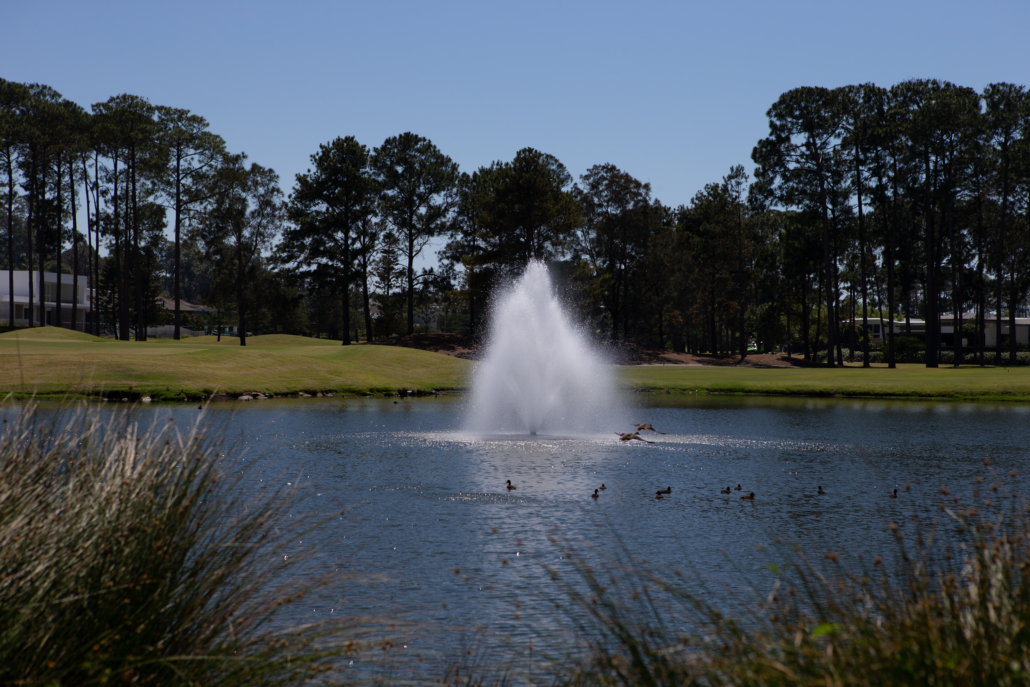
Renewing the Sanctuary Cove Golf Club with a Plasson System
“Partnering with Plasson who have a reputation for quality products not only gave us confidence but also for the installation team, design team and asset owner.”
Steve Moncrieff | Business Development Manager at Nutrien Water Nerang
The original irrigation system at The Pines Golf Course, dating back to 1988, had reached the end of its design life, making a full renewal essential. In November 2019, work began to upgrade the system to meet modern performance standards and future service requirements and was completed in May 2020.
Nutrien Water Nerang, in partnership with experienced golf industry subcontractor Prolinks, was commissioned to deliver the project at Sanctuary Cove Golf Club on the Gold Coast.
After careful assessment, the team recommended a polyethylene (PE) pipe system paired with Plasson fittings, selected for their durability, efficiency, and suitability for large-scale golf course installations.
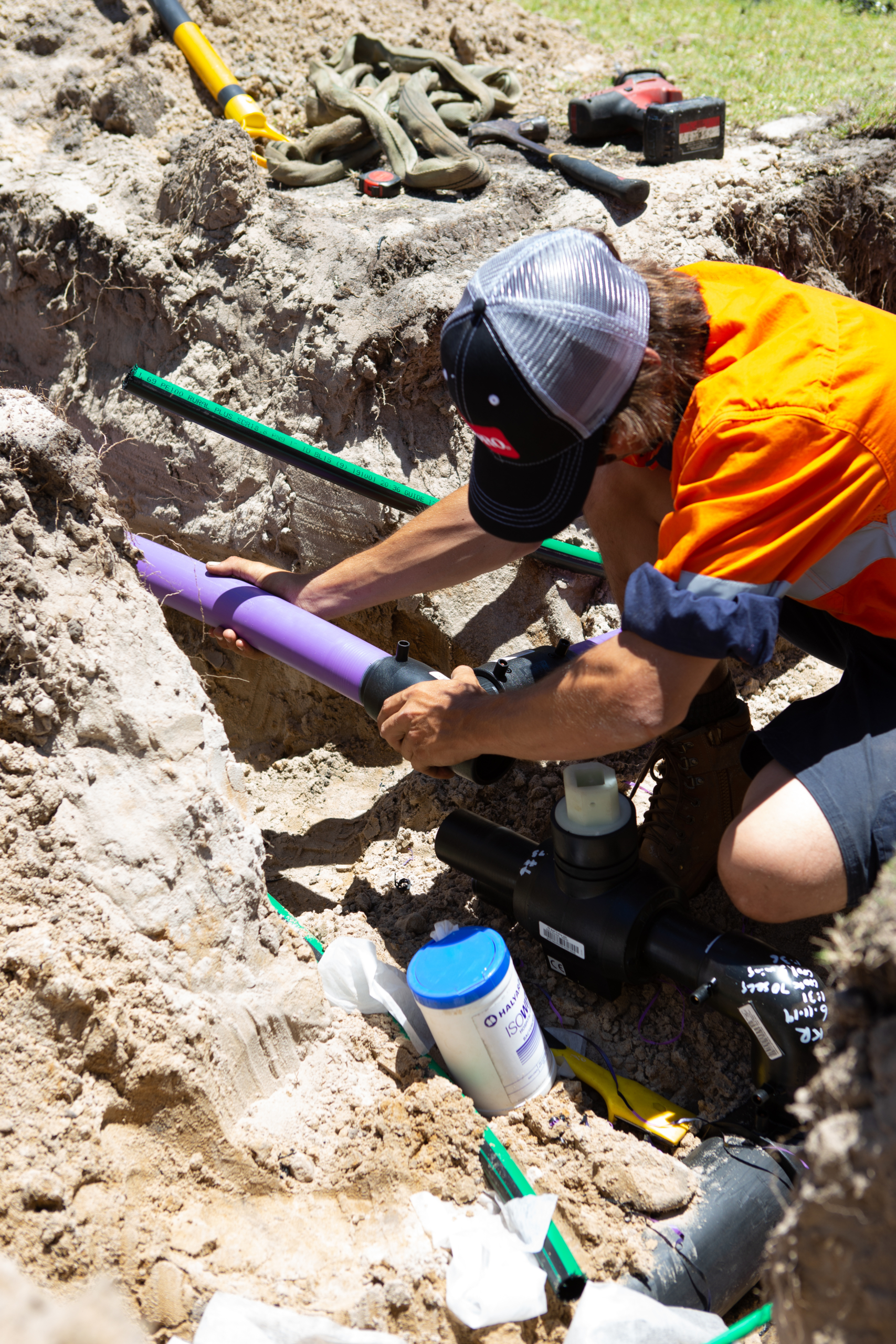
Results and Impact
The finished product achieved by Nutrien Water Nerang and Prolinks with Plasson’s PE system met all of the project requirements, and with PE pipes and electrofusion fittings provided a system with a service lifetime of over 100 years. Some of the benefits of the Plasson system are:

Fatigue Failure Resistance
Polyethylene (PE) materials used in the system provide a high fatigue failure resistance compared to the existing PVC piping and ductile-lined fittings.

Ground Movement Tolerance
The material characteristics of PE systems can accommodate the ground movements that can damage a PVC system.

Long Term Solution
With a system operating pressure of around 750 kpa, Plasson’s electrofusion and spigot fittings have an expected service lifetime of over 100 years. No metal parts or bolts means no corrosion, seizing or anti-freeze treatments.

Recycled Materials
Excess PE pipe and offcuts were ground down and recycled by Nutrien Water Nerang as pit bases, reducing waste and providing a cleaner finished installation.

PN16 Pressure Rating
The monobloc design of the PE100 valves achieve a pressure rating of PN16, exceeding the system designed operating pressure of 750kpa.s.

Trenchless Install
A vibratory plough was used to install the 63mm PE through the fairways and around the greens, reducing the number of joints and allowing the course to be played within two weeks of installation.
Challenges
Renewing the 30-year-old Pines Golf Course irrigation system to meet
current and future levels of service was long overdue. The project had a few key challenges the team needed to overcome:
Ground Movement
The materials and processes had to be flexible enough to withstand ground movements caused by soil composition and water
table changes.
Trenchless Installation Methods
The team wanted to reduce the amount of open trenches dug in the installation process to minimise damage to the greens and shorten the return to course playability time.
Welded Water Mains
The team wanted a secure welded fitting between the mains and the irrigation system reducing the pipe size to 63mm, that would stand the test of time and reduce maintenance requirements.
Time Pressure
The Pines Golf Course was under pressure from its members to have the course back up and running in as short amount of time as possible.
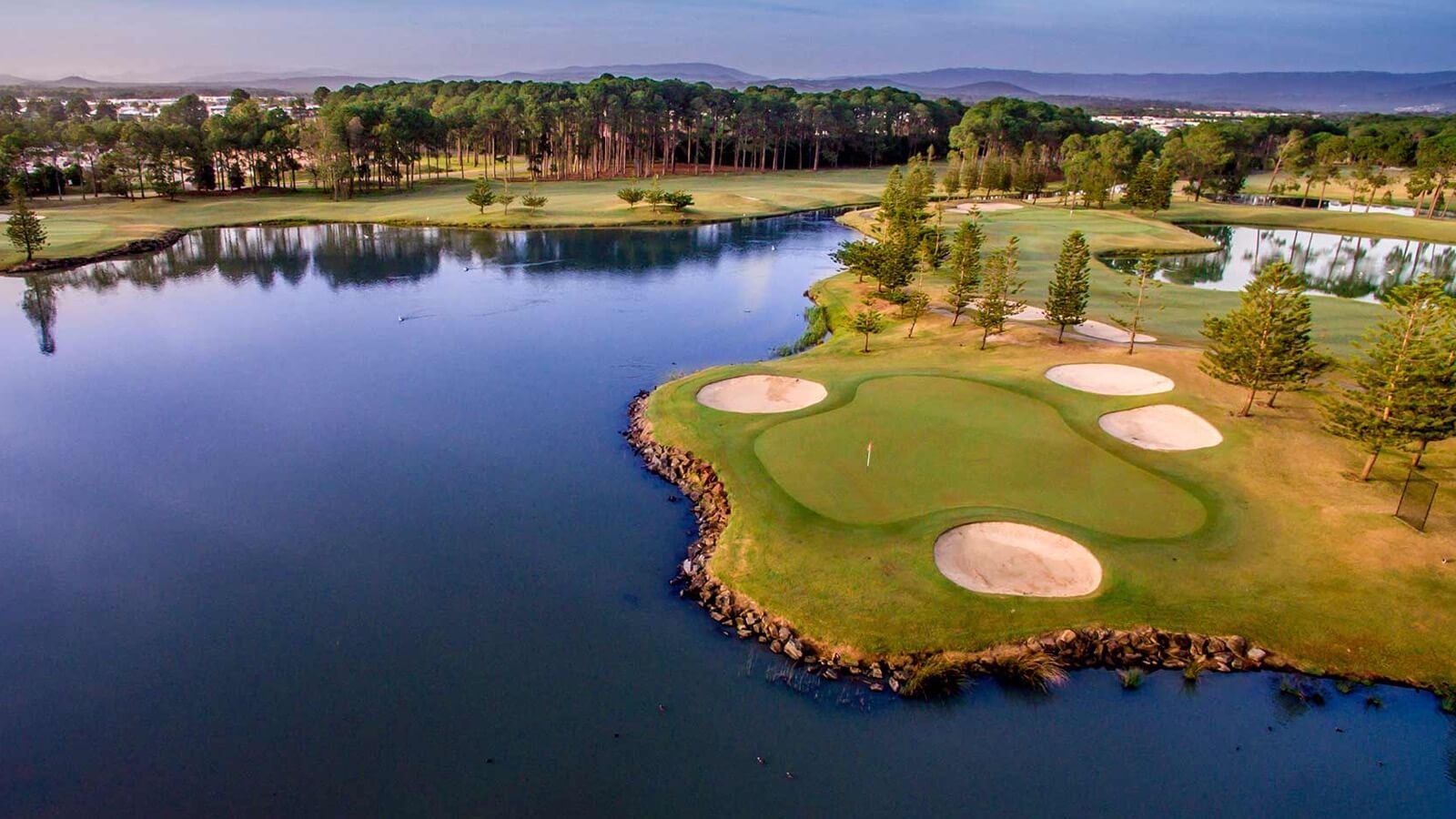
Solutions
The team installed an end-to-end PE solution utilising the Plasson mechanical and electrofusion fittings, Plasson PE100 ball valves and SIMONA spigot fittings. Where necessary, a vibratory plough was used to run long lengths of PE pipe around the fairways and greens, to reduce the damage to the turf and cut down recovery time. As such, members were back on the course playing within two weeks of installation
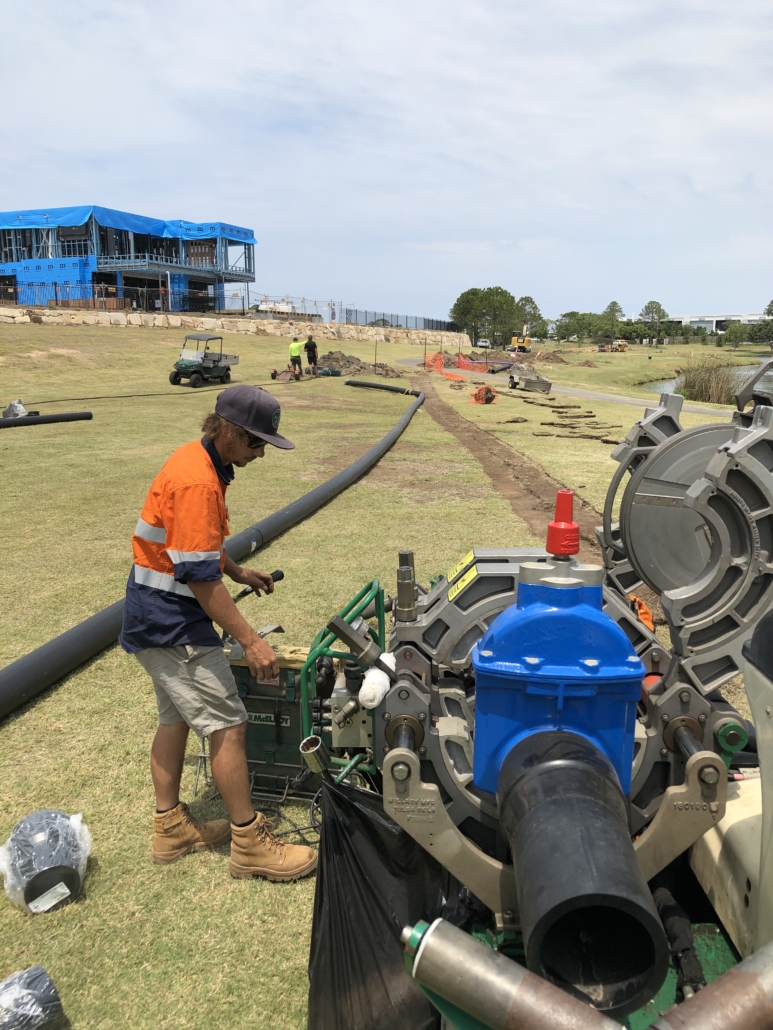
Trunk Mains
PE pipes ranging from 125mm through to 315mm OD were joined by butt welding and electrofusion welding and installed by typical open trench outside the fairway.
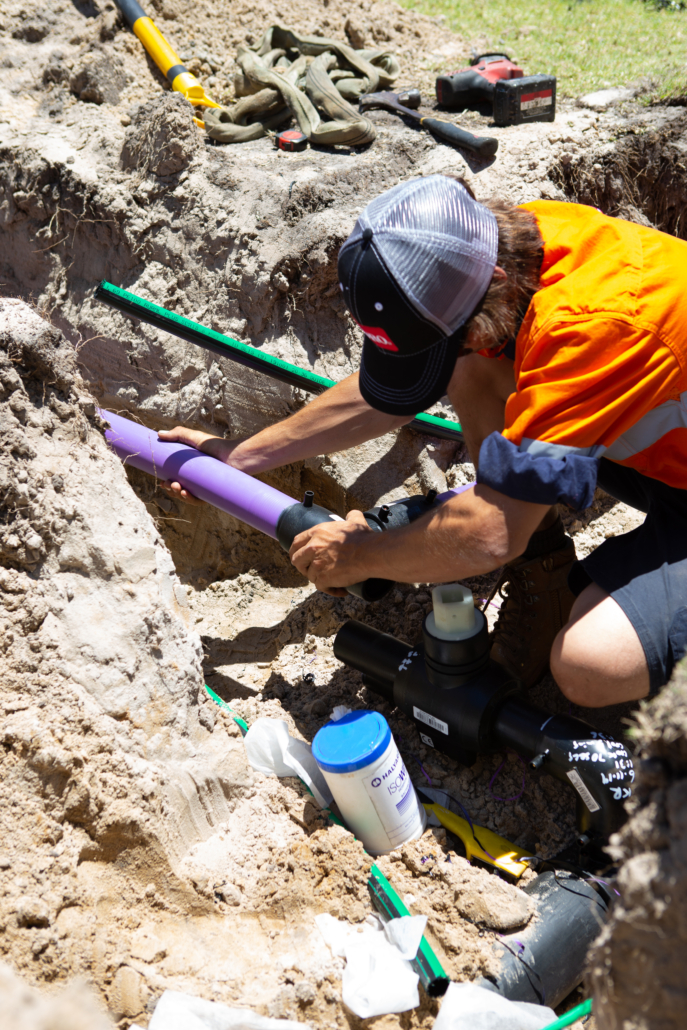
Connecting to Laterals
Plasson electrofusion branch saddles were used to achieve smaller connections (63mm) from the large mains. The welded electrofusion branch saddles become homogenous with the pipe, making the joint stronger than the main pipe on its own.
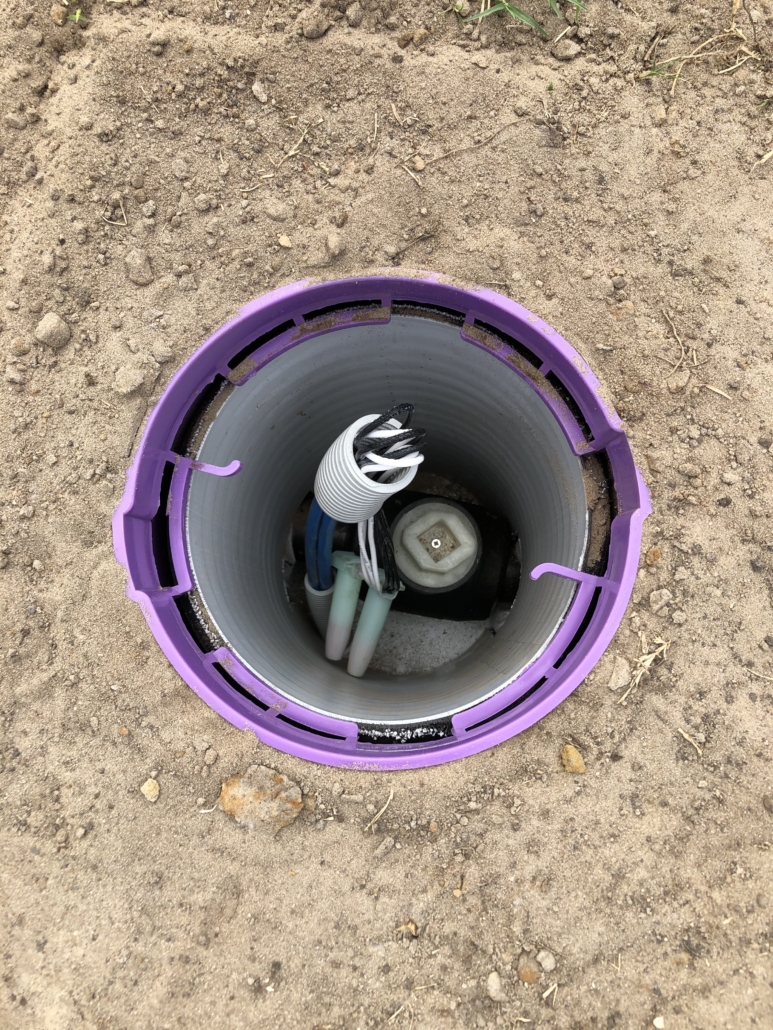
Isolation Valves
Plasson 63mm PE100 Ball Valves with PE spigot ends provided a fully welded solution up to and including the lateral isolation valves. The unique, fully injection-moulded one-piece design eliminates internal cavities and trapped dirt, while riser activation allows for a smaller, round valve pit.
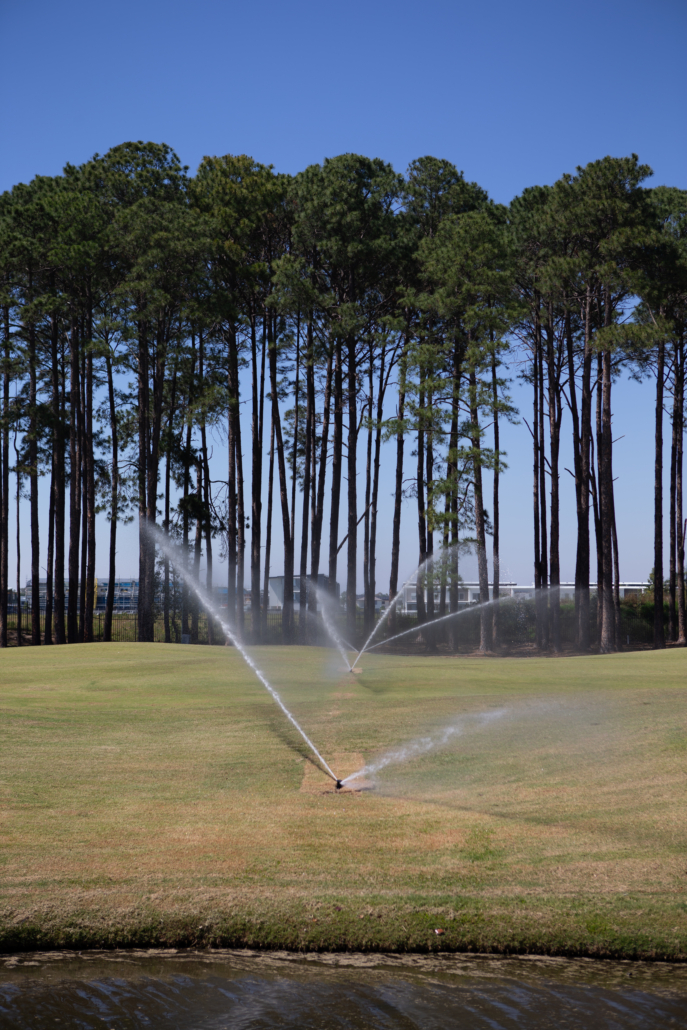
Sprinkler Connections
Depending on the location of the sprinkler in relation to the 63mm lateral, either mechanical tapping saddle or 63x 1.1/4” metric female elbow fittings were used to connect the sprinkler articulated riser.
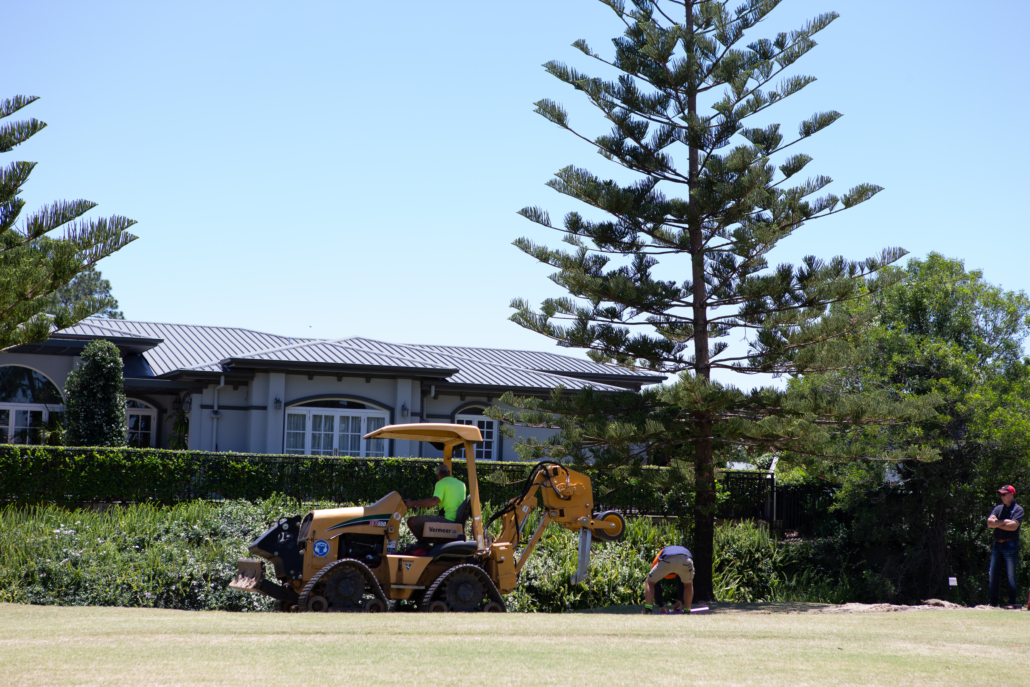
Laterals
A vibratory plough was used to install the 63mm PE through the fairways and around the greens. Metric compression fittings such as tees, elbows and tapping saddles were used to connect to sprinkler risers.
